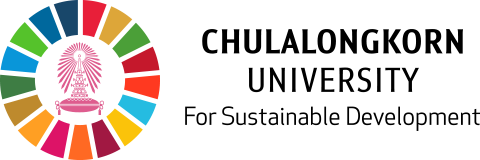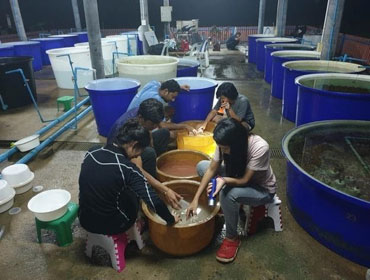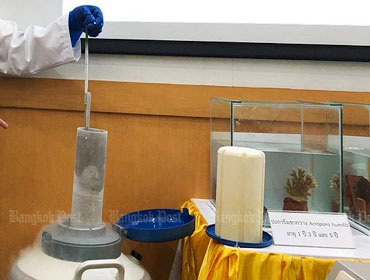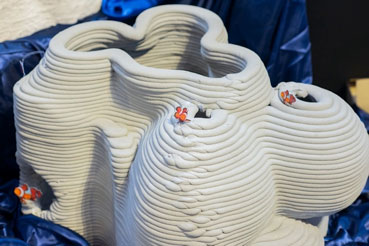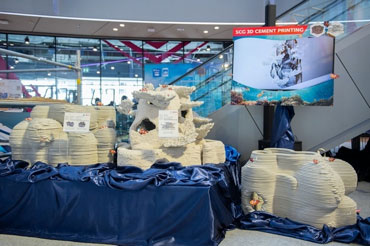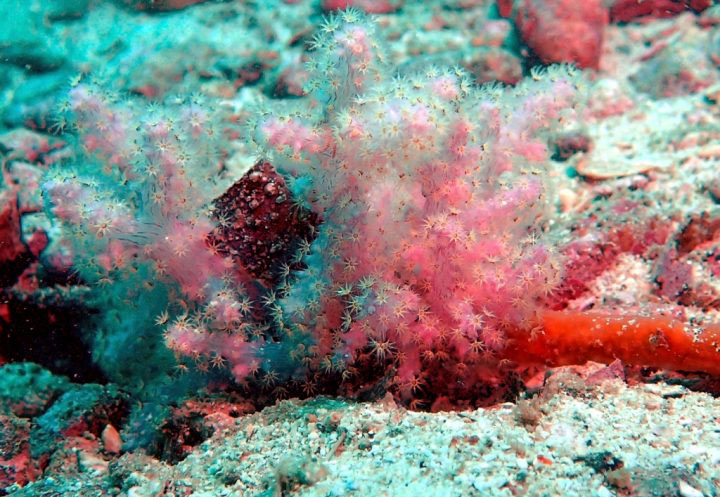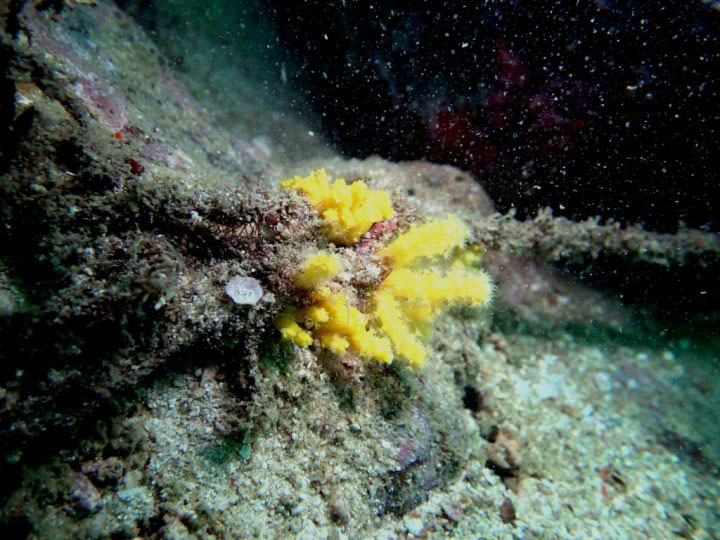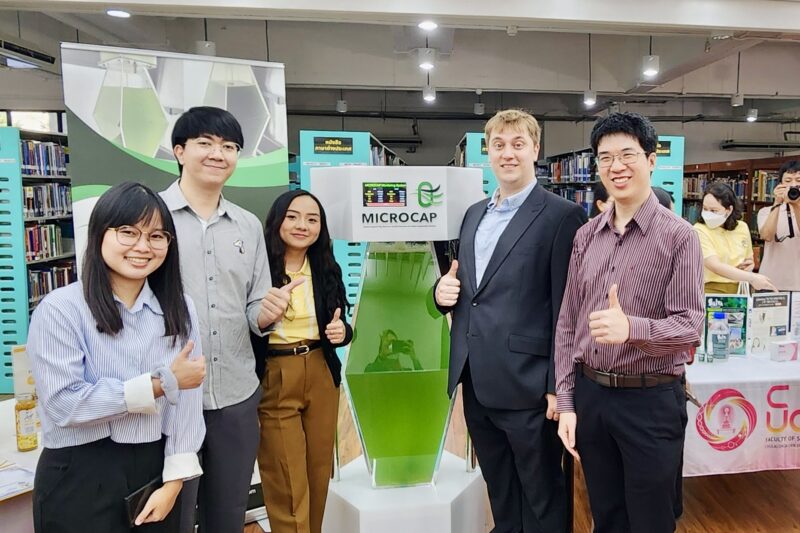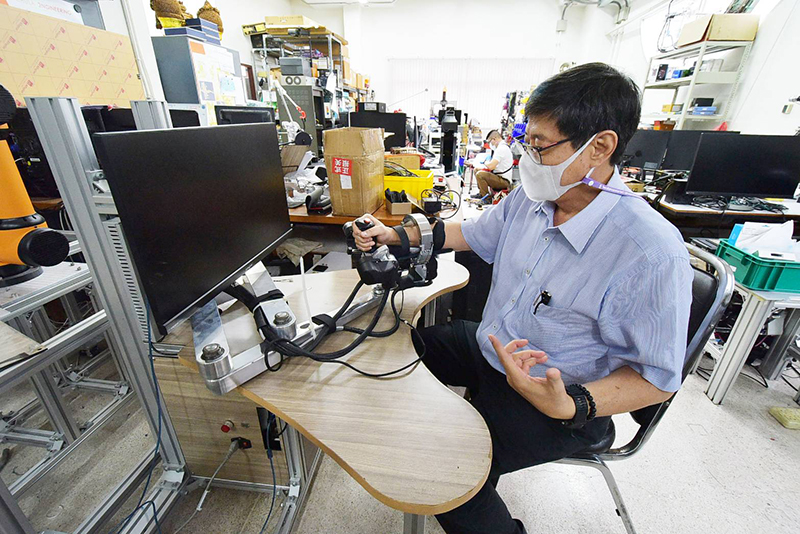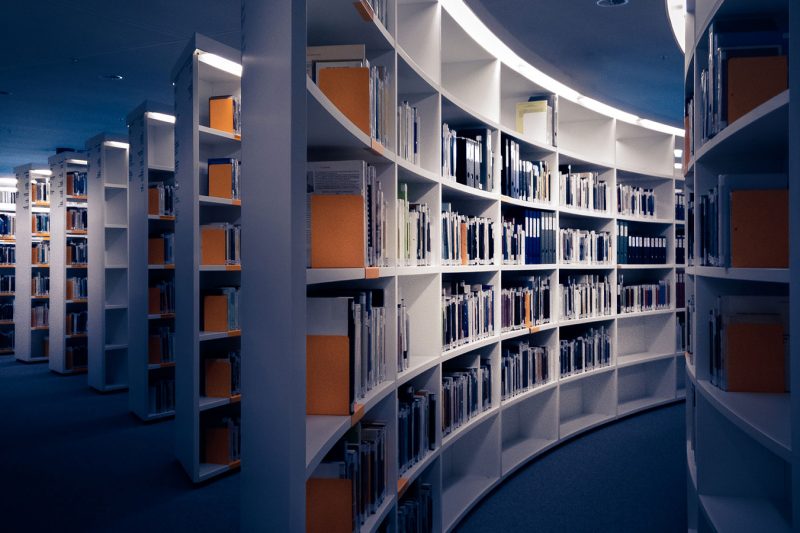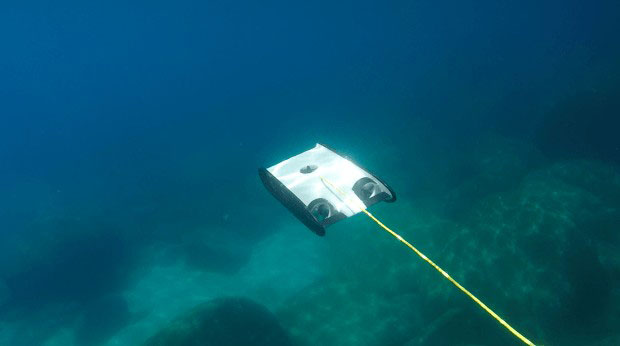Chula showcases 2 innovations for the revival of Thai coral reefs, being the first to achieve artificial insemination, endorsing 3D printing to create an artificial coral
Issues surrounding the rapid deterioration of the ocean’s ecosystems is a crisis that requires immediate correction. Environmental academics from around the world are paying close attention to the biodiversity of plants and animals within the marine ecosystems, that are being directly and indirectly affected by the current climate anomalies. The actions of humans have caused many species to rapidly decline in numbers, some close to the point of extinction. One of these species is the “coral reef”.
From the report of the National Oceanic and Atmospheric Administration (NOAA), it is estimated that many oceans across the world are currently experiencing stress from the ever-changing environment, unavoidably affecting coral reefs. Especially in the year 2547BE, within the space of a year, 38 percent of coral reefs around the world had already been affected, which is over 12,000 square kilometers. Of course, the food chain of the marine ecosystems was also affected, consistent with the 2558BE Scientific Reports that predicted that in the year 2588BE or the next 25 years, corals reefs are at risk of becoming completely extinct, and there may only be 10 percent remaining worldwide.
Looking back on the situation in Thailand, it is found that marine ecosystems in Thai oceans are experiencing a Coral Bleaching phenomenon. In May 2563BE, the Department of Marine and Coastal Resources revealed that the color of over 5-30 percent of shallow coral reefs had begun to fade, with 5-15 percent of coral reefs have already experienced coral bleaching. If left without rapidly resolving, it may cause the effects to escalate and see Thai coral reefs become extinct faster than expected. The catalyst causing this situation to deteriorate is Climate Change, especially El Niño which causes the ocean temperatures to rise. Though it may only be by 1-2 degrees Celsius, this temperature rise can kill the lives of coral reefs and seagrass as well. Furthermore, there is another important catalyst that is contributing to the continuous deterioration of Thai coral reefs, that is the expansion of Thailand’s tourism industry that not only creates massive income amounting to millions of baht but also creates pollution and disposes of tourism activity related waste directly into the sea. Counting the year 2562BE alone, there were approximately 39.7 million tourists that traveled into Thailand which of course tourism activities is one of the contributing factors causing the coral reefs to be destroyed, broken, and damaged in long strips from tourism boats dropping anchors into the sea, scraping and hitting the coral reefs. Additionally, this affects young marine life that used to rely on the coral reefs as a habitat and use them as nurseries during their reproductive stage, leaving them with no natural shelter.
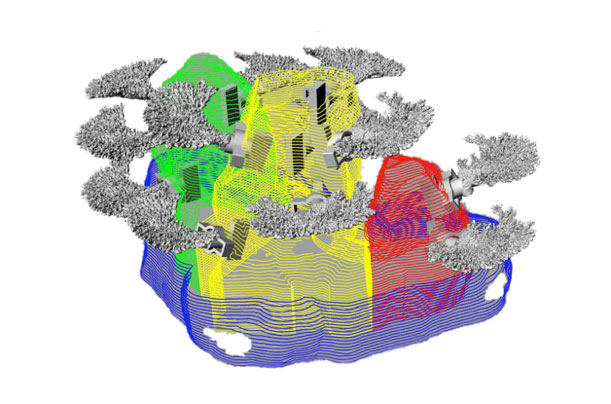
In the past decade, there have been efforts from various sectors urgently researching and developing guidelines to restore marine ecosystems by utilizing retired materials and byproducts of the tourism industry. From steel structures, car tires, concrete rods, and PVC pipes to high voltage transmission line insulators, these materials have been used to make new artificial coral houses for marine life which new coral has started to grow and attach itself to these structures. However, due to the physical characteristics of these materials being inconsistent with the original natural condition of the surrounding coral reef, this has affected the scenery in the ocean which is now unfavorable to ecotourism and its ability to attract tourists back to Thailand’s natural attractions.
Chulalongkorn University has foreseen the importance of restoring life to coral reefs and breathing life back into Thai seas, taking into consideration that if we leave the coral reefs to revive on their own during this time of unbalance in the ecosystems, it may end up being too late. Hence, they have partnered with multiple network alliances, urgently seeking solutions to the current threats surrounding coral reefs that have been mentioned above, with all their might. This is to be done through 2 pilot projects, studying coral propagation via artificial insemination to increase population and chances of survival, paired with creating new coral houses that are naturally aesthetically pleasing through a 3D cement and concrete printing molding process.
The research and conservation of coral reefs at Samae San Islands project, Sattahip District, Chonburi Province, is a pilot project that the Department of Marine Science, Faculty of Science, Chulalongkorn University worked together with 3 network partners which include the Plant Genetic Conservation Project Under the Royal Initiative of Her Royal Highness Princess Maha Chakri Sirindhorn, Naval Special Warfare Command, and Mubadala Petroleum. They initiated research into methods that will conserve coral reefs in the Samae San community, Sattahip District, Chonburi Province, which is a pilot area for breeding coral via sexual reproduction that is collected from nature and from Cryopreservation, using low temperature to maintain the condition of coral egg cells and sperm in laboratories for the first time in the world. This method of artificial insemination is a way to increase the population of young coral before releasing them into nature and also increasing survival rates by up to 40-50 percent, which if the coral was left to reproduce in its own nature, the survival rate for the young coral would only be 0.01 percent.
Currently, the project is able to propagate over 10 species of coral that are able to withstand high sea temperatures, therefore, not only is artificial insemination a way to sustainably conserve and restore coral in nature but is also a solution to Thailand’s coral bleaching issue.
Moreover, the project operator has also created a process to collaborate with over 4 villages in the Samae San community, Sattahip District, Chonburi Province, amounting to 6418 people who are primarily fisherman, merchants, and employees, by holding training to provide knowledge on techniques and processes of coral restoration and conservation while also jointly releasing coral back into the ocean. This is to create a conscience so the community love and cherish their local natural resources by having additional income from ecotourism as a motivator. As a result, Samae San’s income per capita increased totaling 178,766.58 baht per year.
Although artificial insemination increases coral survival rate by 50 percent, due to the popularity of putting artificial corals into the sea to provide more habitat for animals, this then led to the use of artificial coral structures that are environmentally friendly by the Faculty of Veterinary Science, Chulalongkorn University in partnership with 2 more specialized organizations and agencies which include the Siam Cement Group and the Department of Marine and Coastal Resources. They worked together to develop a coral innovation project to help improve and restore coral ecosystems, jointly researching and developing a new form of artificial coral innovation using methods to design a solid coral structure that is as beautiful as the original natural ecosystem. This was done in combination with using innovative coral materials that were developed to be environmentally friendly, molded using a 3D cement concrete printer therefore, strong and durable. Additionally, being able to detail the complexity of coral reefs structures well as well as being easily movable due to its lightweight, dismantlable, and can reduce the costs of transportation and labor used for installation.
The value that Thai seas have gained from this project, not only increases habitats for marine life, but under the sea around Koh Sichang receives monthly project performance monitoring by exploring the number and diversity of species that cling to artificial corals, testing submergence from sediments, and continuously water quality testing. This work has led to receiving the winning 2563BE award for Product and Service Design from the National Innovation Agency (public organization) on the 5th of October 2563BE.
So, it has become clear now that both projects that Chulalongkorn University have so hopefully conducted are methods of restoration and conservation of Thai coral reefs that have led to rapid revival by environmentally friendly mindsets and development of innovations that have come from understanding and has created a collaboration with network partners, passing on this sustainability to stay with the community for the foreseeable future.
In addition, in the conservation of coral, Faculty of Science, Chulalongkorn university along with Chula Unisearch and Plant Genetics Conservation Project by Her Royal Highness Princess Maha Chakri Sirindhorn and Naval Special Warfare Comman (Royal Thai Navy) joined hands to find new species of coral. This has shown diversity of Thai marine ecosystem, with the same given by Her Royal Highness Princess Maha Chakri Sirindhorn as “Sirintorne”
Creating artificial corals from broken glass, Thai Techno Glass Group PLC or BSG GLASS together with Chulalongkorn University’s Reef Biology Research Group, Chulalongkorn University and the Royal Thai Navy’s Naval Special Warfare Command have been conserving and restoring corals in the Samae San community, Sattahip, Chonburi for two years. They aim to restore balance to the marine ecosystem through the “Zero Waste” concept where all the wastes from the glass making process are recycled and built into coral houses.
The Coral Conservation and Restore Project was built on the concept that all waste from the glass making process should be of some benefit. Also, it was necessary to restore the marine ecosystem which has always provided the source for food and been the main source of income of the country as it was deteriorated and destroyed by men and natural disasters.
The said project induced the settlement of young corals and as a result created more habitats for marine animals. The project was also eco-friendly as sand, the main material in the making of glass, was return to the sea.
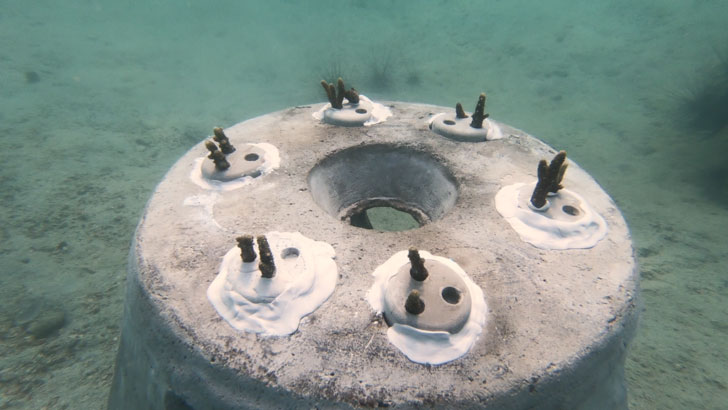
BY
Faculty of Veterinary Science, Chulalongkorn University
Faculty of Science, Chulalongkorn university
Chula Unisearch, Chulalongkorn University
Related articles:
- https://www.bangkokpost.com/life/social-and-lifestyle/1680856/freezing-the-damage
- https://www.mubadala.com/en/our-impact/bringing-life-back-reef
- https://thaiembdc.org/2019/05/06/thai-scientists-innovate-to-save-coral/
- https://www.sdsymposium2020.com/en/pillar/artificial-coral-reef/
- https://www.chula.ac.th/news/34904/
- https://www.chula.ac.th/news/36883/
- https://www.chula.ac.th/en/news/42200/
- https://www.dailynews.co.th/education/813390/
- https://www.matichon.co.th/prachachuen/prachachuen-scoop/news_1445764
Others
Chula Asian Research Center for Migration’s Reports
Asian Research Center for Migration, Chulalongkorn University collaborating with International Organization for Migration (IOM), conducted this research and completed a publication in 2019. This aimed to contribute towards the Governments of Thailand and Cambodia in their efforts to develop transparent and rights-based migration policies and programs which maximize positive contributions of migration to the economies and societies of both countries.
